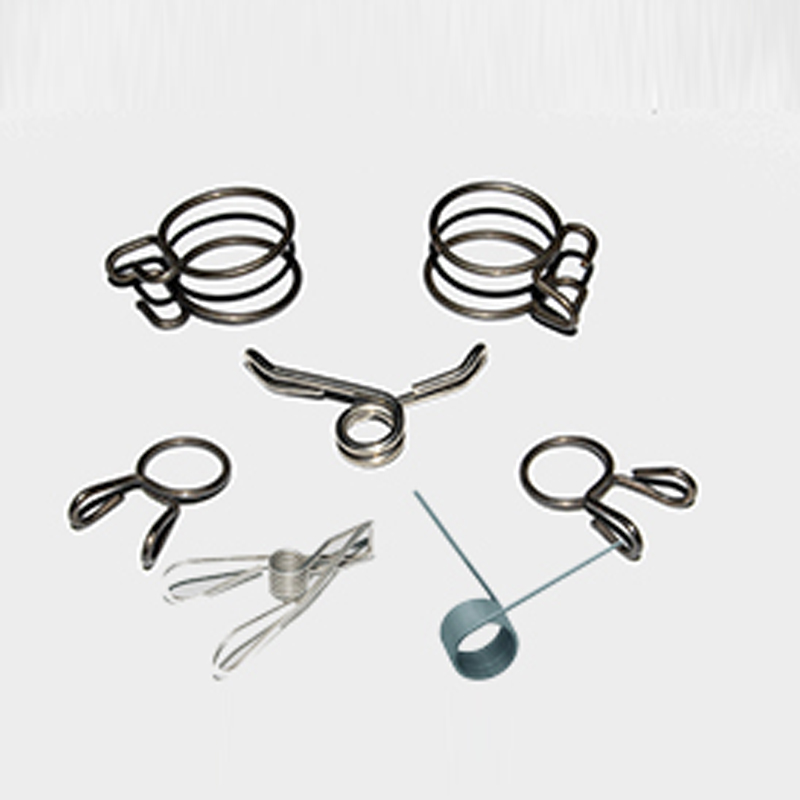
- Mobile Phone
- +8613931874955
- sales@cntcmetal.com
Design and Applications of Extended Helical Springs in Mechanical Engineering and Industrial Use
Understanding Extension Helical Springs Principles and Applications
Extension helical springs are crucial components widely used across various industries and engineering applications. Designed to absorb tensile forces, these springs are characterized by their helical shape, which allows them to stretch when a load is applied. This article explores the design, working principles, benefits, and applications of extension helical springs.
Design and Structure
An extension helical spring is typically made from high-carbon steel or other spring materials, which offer a balance between flexibility and strength. The spring is usually coiled in a helix shape, giving it the ability to extend along its axis. The diameter, wire thickness, and number of coils can be adjusted to suit specific load requirements. Proper design is essential, as the springs must endure repeated stress without losing their elasticity or breaking.
When designing an extension spring, several factors must be considered, including
1. Load Requirements The maximum load the spring will encounter helps determine the wire diameter and coil spacing. 2. Proper Length and Diameter The free length and diameter influence how much the spring will elongate under load. 3. Coil Thickness Thicker wire can handle more weight but might limit flexibility. 4. Material Selection The choice of material affects durability and corrosion resistance, making it crucial for specific applications.
Working Principles
Extension helical springs work on the principle of Hooke's Law, which states that the force needed to extend or compress a spring is proportional to the distance it is stretched or compressed
. Mathematically, this relationship is defined by the equation\[ F = k \cdot x \]
extension helical spring

where \( F \) is the force exerted by the spring, \( k \) is the spring constant, and \( x \) is the extension (amount the spring is stretched).
When an external force is applied, the spring elongates, storing energy in the process. Once the force is removed, the spring returns to its original shape, releasing the stored energy. This property makes extension springs particularly useful for energy storage applications.
Applications
Extension helical springs find extensive use in various sectors due to their versatility and reliability. Some notable applications include
1. Automotive Industry Used in vehicle suspension systems and clutch mechanisms, helping absorb shocks and improve ride quality. 2. Industrial Machinery These springs are often employed in equipment that requires load balancing and tensioning, as seen in conveyor belts and packaging machines. 3. Electronics In devices such as printers and copy machines, extension springs are used to maintain tension in moving parts. 4. Consumer Products Items like retractable dog leashes and clotheslines utilize extension springs to manage tension and facilitate movement.
Benefits and Advantages
Extension helical springs offer several benefits, including their ability to handle dynamic loads, high fatigue resistance, and efficient energy storage capacity. They are relatively simple to manufacture and can be produced in various sizes and strengths to meet specific needs. Furthermore, their ability to return to an original shape after deformation ensures longevity and reliability, making them a preferred choice in critical applications.
Conclusion
In conclusion, extension helical springs are essential mechanical components that play a vital role in numerous applications across diverse industries. Understanding their design, principles, and benefits enables engineers and designers to implement these components effectively, ensuring reliability and efficiency in their systems. As technology advances, the future of extension springs looks promising, with potential innovations in materials and designs that could further enhance their functionality and application scope.
share:
-
Your Source for Concrete Wall Ties and Masonry AccessoriesNewsJul.10,2025
-
Unlocking the Power of Iron Wire for Every ProjectNewsJul.10,2025
-
Explore Advanced Chain Wire and Stainless Steel Mesh FencingNewsJul.10,2025
-
Discover the Benefits of Annealed Wire ProductsNewsJul.10,2025
-
Discover China Stainless Steel Wire Mesh SolutionsNewsJul.10,2025
-
Build with Confidence Using High-Performance Masonry AccessoriesNewsJul.10,2025
-
Why Sacrificial Formwork Is Redefining Underground ConstructionNewsJun.06,2025



















